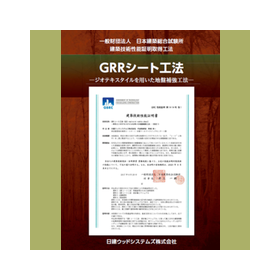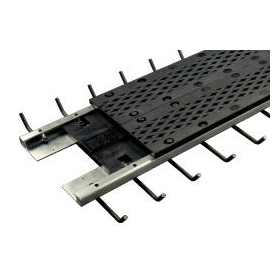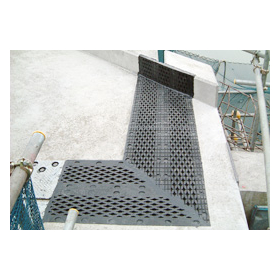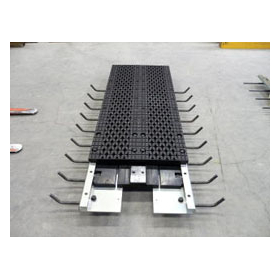Residential foundation reinforcement method "GRR Sheet Method" [Preventing differential settlement of houses!]
GRR sheet method
A housing foundation reinforcement method to prevent differential settlement of residential buildings! No contamination of the housing foundation or groundwater occurs!
The GRR sheet method is a technique that involves laying geotextiles within a crushed stone base of a specified thickness. This method provides reinforcement effects near the surface due to the crushed stone and deformation restraint effects from the sheet, resulting in enhanced bearing capacity. After construction, nothing remains deep underground, so there are no underground installations that arise after the demolition of buildings. 【Features】 - No contamination of residential foundations or groundwater occurs. - It can be implemented within the flow of foundation work, so no special procedures are necessary. - Good workability and the ability to work in rainy weather prevent delays in the workflow. - The work is free from vibration and noise, so it does not disturb the neighbors. - Construction is possible in areas where heavy machinery cannot access. - The improvement effects after construction can be confirmed using surface wave exploration methods. *For more details, please request materials or view the PDF data available for download.
Inquire About This Product
basic information
Features of the "GRR Sheet Method" - It does not use ground solidification materials, so it does not cause environmental pollution. - The vibrations and noise associated with construction are minimal, allowing consideration for the surrounding environment. - Since the sheet is laid directly beneath the building foundation, the operating time of construction machinery is reduced. - The sheet is made of 100% polypropylene, allowing for incineration during building demolition. - The method can be fully visually confirmed, ensuring reliable construction management and shortening the construction period. - It prevents pollution to the surrounding environment and does not impact noise or vibrations during construction. - Since heavy machinery is not used in construction, it can be implemented in narrow spaces or sites with uneven approaches. - Ground reinforcement can be achieved at a typical foundation depth, making it possible to work in areas with buried cultural properties. - The quality of the materials used remains stable over the long term.
Price range
Delivery Time
Applications/Examples of results
The deep mixing method using cement-based solidifying materials, which is employed as a ground reinforcement method for small-scale buildings such as residential structures, and pile-type ground reinforcement methods using steel pipes, require specialized construction equipment during construction and may necessitate the removal of pile structures during the demolition of buildings. This method was developed to address such issues and does not require special construction equipment or skills, allowing it to be implemented as part of the crushed stone foundation work. Additionally, since the reinforcement is only near the ground surface, the removal work during the demolition of buildings is very easy.
catalog(1)
Download All CatalogsCompany information
The GRR sheet method is a technique that achieves reinforcement of bearing capacity by laying geotextiles within a crushed stone base of a specified thickness, utilizing the rigidity reinforcement effect near the surface due to the crushed stone and the deformation constraint effect of the sheet on the crushed stone layer. Unlike pile-type ground reinforcement methods such as deep mixing treatment and shallow mixing treatment, it does not require any special construction equipment, making it well-suited for application in narrow spaces. Additionally, nothing remains underground after construction, so there are no underground installations that arise after the demolition of buildings. Furthermore, unlike other ground reinforcement methods, it can be integrated as part of the base work, which reduces the burden of construction management, among other benefits.






![[Information] Introduction to the SEP Method](https://image.www.ipros.com/public/product/image/2c2/2001122017/IPROS12675116866454009658.png?w=280&h=280)




![[NETIS Registration] Ultra-thin sensor for concrete filling and compaction management](https://image.www.ipros.com/public/product/image/073/2000431206/IPROS27902374793734358032.jpeg?w=280&h=280)
